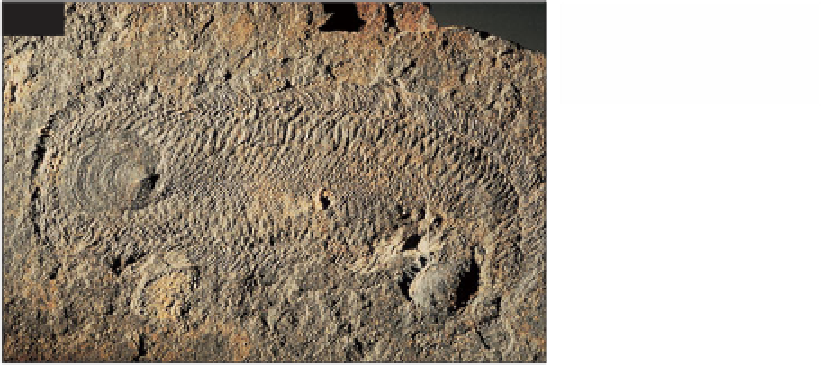Geoscience Reference
In-Depth Information
WiwaxiaProblematica or
Phyllum Mollusca
This strange mud-crawling animal was
protected from predators by its dorsal
surface being covered by a coat of scale-like
sclerites and a double row of pointed spines
(
45
). The ventral surface was a soft foot
similar to that of a slug or snail and from
the open mouth protruded a radula, also
reminiscent of mollusks; indeed Caron
et al
(2006) interpreted this genus as a stem
group mollusk. The microstructure of the
sclerites, however, is more akin to that of
polychaete annelids. The true affinities of
Wiwaxia
thus remain in doubt, although it
is almost certainly related to the halkieriids
(
46
) (see section on Sirius Passet below and
Conway Morris, 1985).
PikaiaPhylum Chordata
An inconspicuous but vital element of the
Burgess fauna,
Pikaia
possessed a stiff rod
along its dorsal margin (
47
), which
suggests that it is a primitive chordate, the
phylum to which Man and all vertebrates
belong, and showing that even our
45
45 The problematical
Wiwaxia corrugata
USNM. Length
about 35 mm 1.4 in.
46
46 The halkieriid Halkieria
evangelista, from Greenland
GMC. Length 60 mm
2.4 in.





Search WWH ::

Custom Search